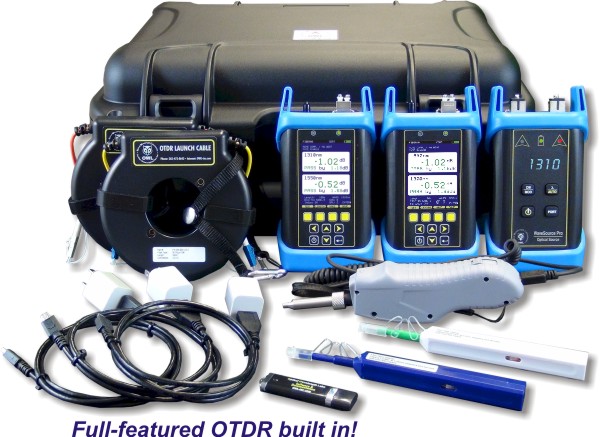All You Required to Understand About Robotic Vision and Its Applications in Advanced Optical Dimension Equipments
Robotic vision stands for a significant development in the junction of computer vision, artificial knowledge, and equipment knowing. This technology enhances the precision of optical measurement systems, allowing real-time data analysis and improved high quality control. Its influence covers several sectors, from producing to health care. Nonetheless, the developing landscape of robotic vision raises concerns regarding future abilities and applications (optical fibre diameter analyser). What advancements exist in advance in this transformative field?
Comprehending Robotic Vision: Key Concepts and Technologies
Robotic vision includes the modern technologies and methods that enable makers to interpret and recognize visual details from their setting. This field integrates elements of computer vision, man-made intelligence, and artificial intelligence to facilitate automated decision-making based on aesthetic information. Secret ideas consist of image handling, which includes the enhancement and evaluation of photos to draw out purposeful attributes, and item recognition, which enables devices to determine and categorize objects within a scene.

The Combination of Robotic Vision With Optical Dimension Systems
As industries increasingly require accuracy and efficiency, the assimilation of robot vision with optical dimension systems has emerged as a transformative technique. This synergy allows robots to regard and interpret their surroundings, enhancing the capacity of optical dimension systems to assess and analyze items with exceptional accuracy. By equipping optical sensing units with sophisticated imaging innovations, robot vision allows real-time data collection and handling, helping with prompt adjustments to dimension specifications.
Additionally, the combination equips automated systems to find variants in dimensions, surface top quality, and alignment, which are essential in quality control procedures. Improved formulas, such as machine learning, additional boost this integration by boosting the systems' capability to adapt to different atmospheres and situations. The combination not just improves measurement procedures yet also decreases errors, ensuring that products fulfill strict industry criteria, consequently strengthening the duty of robotic vision in the future of optical dimension systems.
Applications of Robotic Vision in Production
In contemporary production atmospheres, using vision systems has actually changed production procedures by making it possible for devices to execute jobs with amazing precision and speed. Robotic vision systems are increasingly employed for quality assurance, where they evaluate products for problems and warranty adherence to requirements. These systems make use of electronic cameras and advanced algorithms to evaluate products in real-time, significantly minimizing the danger of human mistake.
In addition, robotic vision facilitates automation in production line, allowing robots to properly identify parts and assemble them with very little downtime. This modern technology likewise improves inventory monitoring, as vision systems can check stock levels and discover disparities, ensuring a smooth supply chain.
Moreover, robotic vision help in the application of smart factories, where information from vision systems can be integrated with various other technologies to optimize workflows. In general, the applications of robot vision in manufacturing show its critical duty in enhancing efficiency, top quality, and efficiency throughout numerous markets
Robotic Vision in Healthcare: Changing Patient Treatment

In recovery, robotic vision help in keeping an eye on person development and tailoring therapy sessions to private demands. It sustains physician by automating tasks such as data collection and patient surveillance, enabling even more time to concentrate on direct patient interaction. Additionally, robotic look here vision boosts telemedicine by allowing remote medical diagnosis and online assessments, connecting the void between patients and healthcare carriers. In general, the application of robotic vision in medical care is changing individual treatment, leading to improved outcomes, performance, and individual contentment.
Future Fads and Growths in Robotic Vision Technology
The quick advancement of robotic vision innovation assures to better improve its applications across various sectors, consisting of health care. Future trends suggest a significant change in the direction of including expert system and artificial intelligence, enabling systems to learn from large datasets and boost accuracy in time. Enhanced sensing unit modern technologies and deep knowing algorithms are expected to fine-tune item acknowledgment capacities, allowing robots to translate intricate atmospheres better.

Furthermore, the combination of augmented truth (AR) with robotic vision will likely transform exactly how robotics assist in surgeries and diagnostics. This harmony will certainly help with real-time data visualization, improving decision-making procedures. Additionally, miniaturization of elements will lead to even more portable and versatile robotic vision systems appropriate for a variety of jobs. As these advancements unravel, sectors will witness raised automation and performance, strengthening robot vision as a keystone of ingenious technological services.
Often Asked Inquiries
What Are the Key Elements of a Robot Vision System?
The main elements of a robot vision system include electronic cameras for image capture, processors for data analysis, formulas for analysis, and actuators for activity. Together, these elements make it possible for robots to perceive and engage with their advice setting properly.
Just How Does Robotic Vision Improve Precision in Measurements?
Robotic vision boosts dimension precision by making use of sophisticated imaging technologies, allowing precise item detection and spatial analysis. This capability decreases human error, raises repeatability, and enables real-time changes, inevitably boosting general measurement integrity and Continued performance.
What Industries Benefit A Lot Of From Robotic Vision Technology?
Different markets profit considerably from robot vision innovation, consisting of production, healthcare, farming, and logistics. These markets make use of improved precision, performance, and automation, causing enhanced efficiency and reduced functional costs in their respective procedures.
Can Robotic Vision Solutions Operate In Low-Light Conditions?
Robotic vision systems can undoubtedly work in low-light conditions, using innovative sensing units and formulas to improve image clearness. This capability enables them to perform efficiently in various settings, consisting of commercial and monitoring applications, despite minimal lighting.
What Are the Expenses Linked With Applying Robotic Vision?
The costs connected with executing robotic vision vary substantially, influenced by elements such as cameras, software program, and integration. Extra expenditures consist of upkeep, training workers, and possible upgrades to existing systems, which can gather gradually.